Crows Do the Darndest Things & Garden Pests
Plus homestead tough love...
Gazing out at the garden, I saw a crow pecking at a small, desiccated gray thing near our zucchini patch. A moment later, the crow flew up to the roof of our shop, and did something quite extraordinary…
We’ve had an unprecedented number of crow visitors in our yard this summer. What’s interesting is that they haven’t arrived in flocks (which would make me really anxious, thinking of the damage they could do to our food crops), but just one or two at a time.
Yet crows in our actual garden are so rare, this one really roused my curiosity.
Earlier this week, watching the pecking crow, I’d even called my husband John over to look. “What do you think that gray thing is?”
“I have no idea,” said John.
Then the crow abandoned the gray whachacallit, flew up to the solar panels on our shop roof, and promptly slid down the slippery glass surface, wings flapping wildly. “What in the world…?”
Scrabbling his claws awkwardly, the crow scooted up the glass again, and ducked under the eaves. Trying to fly in place—sort of hovering like a hummingbird—he couldn’t do it for more than a second or two.
Then flying straight at the eaves, where the wasps set up their summer nests, he ducked under a second time—to grab a small gray thing in his beak.
A paper wasp nest!
As the wasps buzzed around him—I can imagine pretty ticked off at his thievery—the crow landed a short distance away to enthusiastically peck at the nest.
Then it hit us both at the same time—he was eating the wasps’ eggs!
And doing us a big favor!
Last summer, we had a really bad infestation of paper wasps—what I call a Little Farm “frenemy.” Wasps were devouring our blueberries in such numbers that I was forced, for safety’s sake, to pick some of my shrubs on the down-low.
(i.e., in the dark with a headlamp.)
This summer, I’ve noticed with great relief that there are far fewer wasps nests in the yard. Actually, the only ones left are a sprinkling of small ones. Until I saw the crow at work, I didn’t realize why our wasp population had dropped so dramatically.
In any event, it’s amazing to me how nature, left to itself, can often balance things out.
Yet our wasp problems may be far from over…
I was in the back of our carport a few days ago to grab some garden tools. I turned around to leave and saw, to my horror, I was only a few feet away from this!
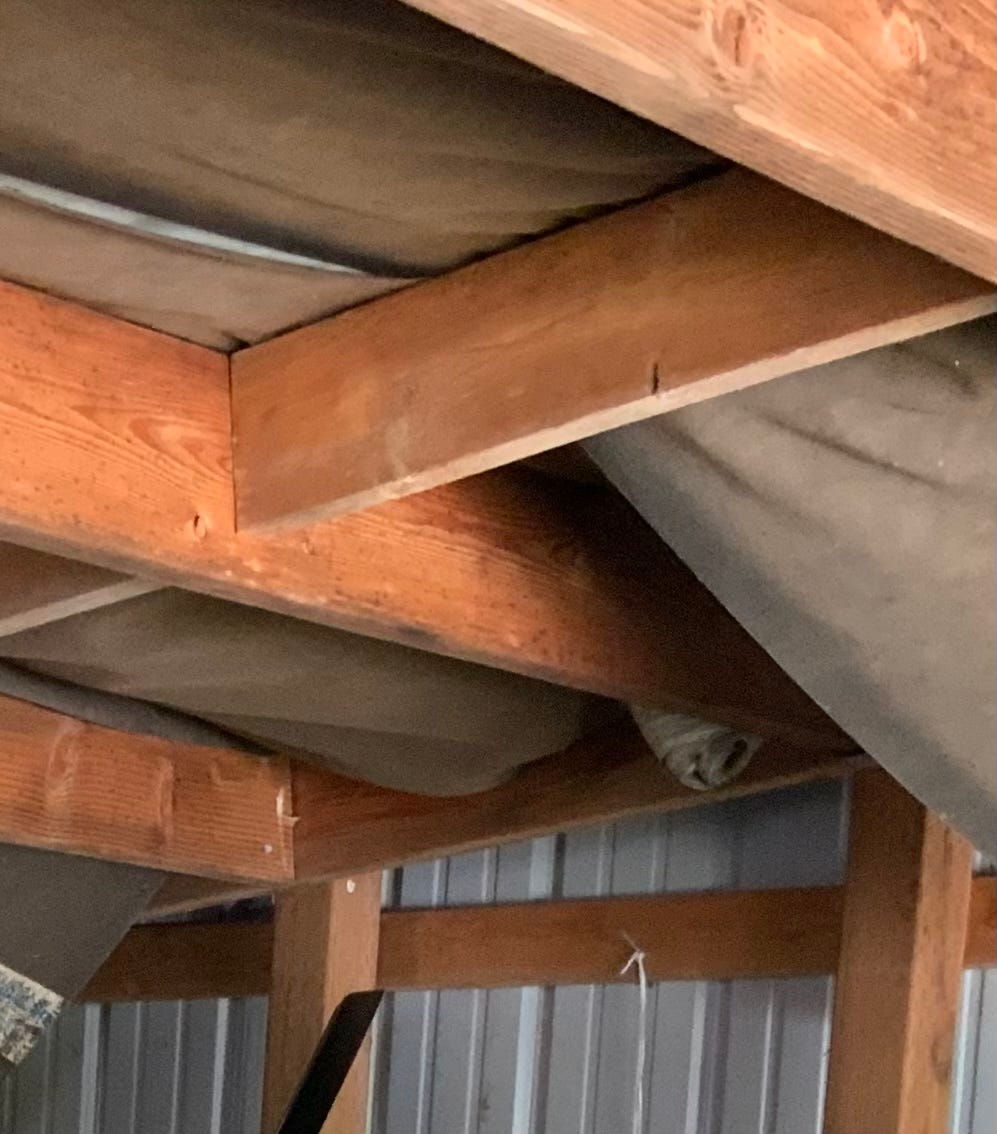
An active (that is, dozens of insects flying in and out), 10-inch long hornet’s nest!

Now, John has no problem taking a long tree bough and knocking paper wasp nests from the eaves of our shop. But when I told him about this nest, he said,
“I’ll take in out when it’s cooler—in November!”
Blueberry RIP
This probably sounds odd, but I truly love my blueberry shrubs.
Ever since we planted them 19 years ago, I’ve nurtured our 17 shrubs—carefully pruning and mulching them in spring, weeding around them spring and summer, and once they began bearing, harvesting their berries from mid-July into September.
I also just keep an eye on them generally: through fall and winter, I’ll give them some supplemental mulch, and regularly check them for weather damage, fungus, and healthy new growth.
Blueberries are our most valued crop, one that we eat year round, fresh and frozen.
Cherishing my shrubs as I do, you could even say I have a relationship with them. After all our years together, I’ve gotten to know their growth and fruiting patterns, their ripening schedule and overall productivity.
But there’s one shrub that has been kind of a problem child.
It’s a late bearer, the majority of the berries ripening in early September. By then, our nights are getting quite chilly, and the berries have little flavor and even less sweetness.
So they’re okay for baking, but not great for fresh eating.
The far greater problem, however, is that this shrub is prone to mummy berry.
That’s a fungal illness that makes berries turn a sickly pink, then shrivel up into little gray bits—they really do look like little mummies.
Most blueberry shrubs will have a bunch of mummies, and it’s not a big deal to just nab them and toss them in the trash. But this particular plant has always had a LOT of them, and as the season progresses, you’ll find more and more.
Where it gets complicated: mummy berry is a highly contagious disease, and one tiny mummy, whether it’s on the bush or has fallen to the ground, can spew out thousands of infectious little spores.
Now John and I, over time, have had to edit down our orchard plants because of fungal diseases, scab or an overall failure to thrive.
But my blueberries? I could not imagine deliberately getting rid of any of my beloved blueberry plants.
Until this summer.
You see, I’ve been trying to work smarter in the garden, not harder.
I imagined 1) all the time I would spend picking those pesky mummies off my problem child shrub, and 2) all the backaches I risked picking up even more off the ground beneath, and 3) all the healthy shrubs surrounding this one that could be affected, and then I’d be picking up more and more mummy berries!
I came to what felt like a ground-breaking conclusion:
Life’s too short.
And John and I are getting older. We need to put our energies where they will do the most good for our place.
So as soon as the berry blossoms were spent, and no more bees were visiting the shrub, I surveyed my problem kiddo for the last time. “I’m so sorry,” I said aloud.
Steeling myself, with a firm grasp on the giant loppers John got me for Christmas, I knelt and cut the first cane at ground level.
Killing a reasonably healthy, productive garden plant…well, it hurt. But I forced myself to go on. I methodically cut the rest of the shrub’s canes.
I bundled up the seven or so canes, and set them in a pile with the rest of our spring orchard pruning.
I admit, I did feel ruthless, as I looked at the former shrub’s site. Yet as I spread the spot with fresh wood chips, which would cover up any lingering mummy berry spores in the soil, I felt a little better.
This “edit” of the one would be for the greater good. And sometimes, just like with people, homesteady tough love is the way to go.
And Mother Nature compensated me for the loss of my shrub…a garden filled with wild foxglove!
Have you made any tough decisions in your garden lately?
Escapist Reading that’s Real Life
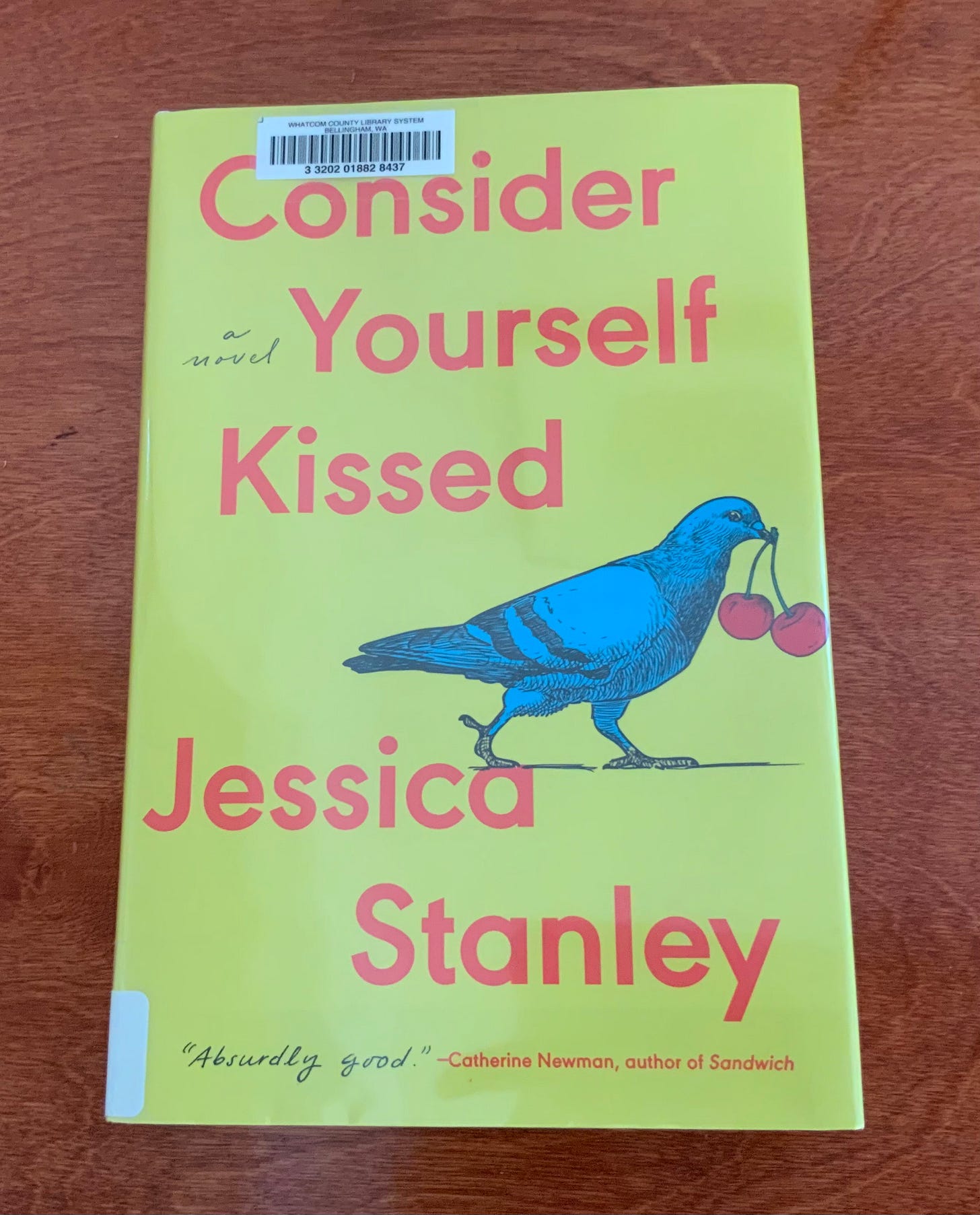
When Substacker Sophie Morris at Food and Fiction with Sophie highly recommended this novel, Consider Yourself Kissed, Jessica Stanley’s debut, I hustled to get myself a copy.
And so glad I did! Set in London—a far cry and thousands of miles from my life in the woods—it’s a contemporary story of romantic love, family life, and for me, a really fascinating look at British politics…and SO much more.
Wise and clever and tragic and uplifting—with several adorable kiddos too—I hope you’ll consider yourself reading it!
As always, thank you so much for visiting my Little Farm in the woods. If you enjoyed reading my news, I hope you’ll press the handy “Like” ❤️ button… And I warmly invite you to share your thoughts with a comment!
Fond regards from me and our zany hummingbirds—
~Susan, from the Foothills


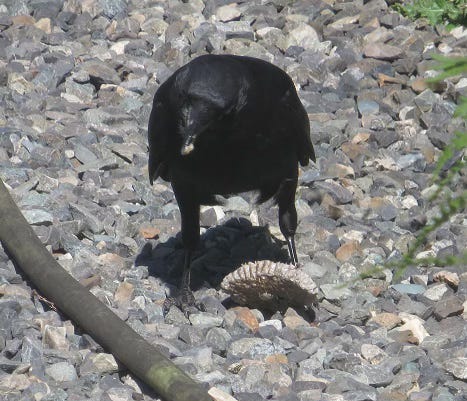
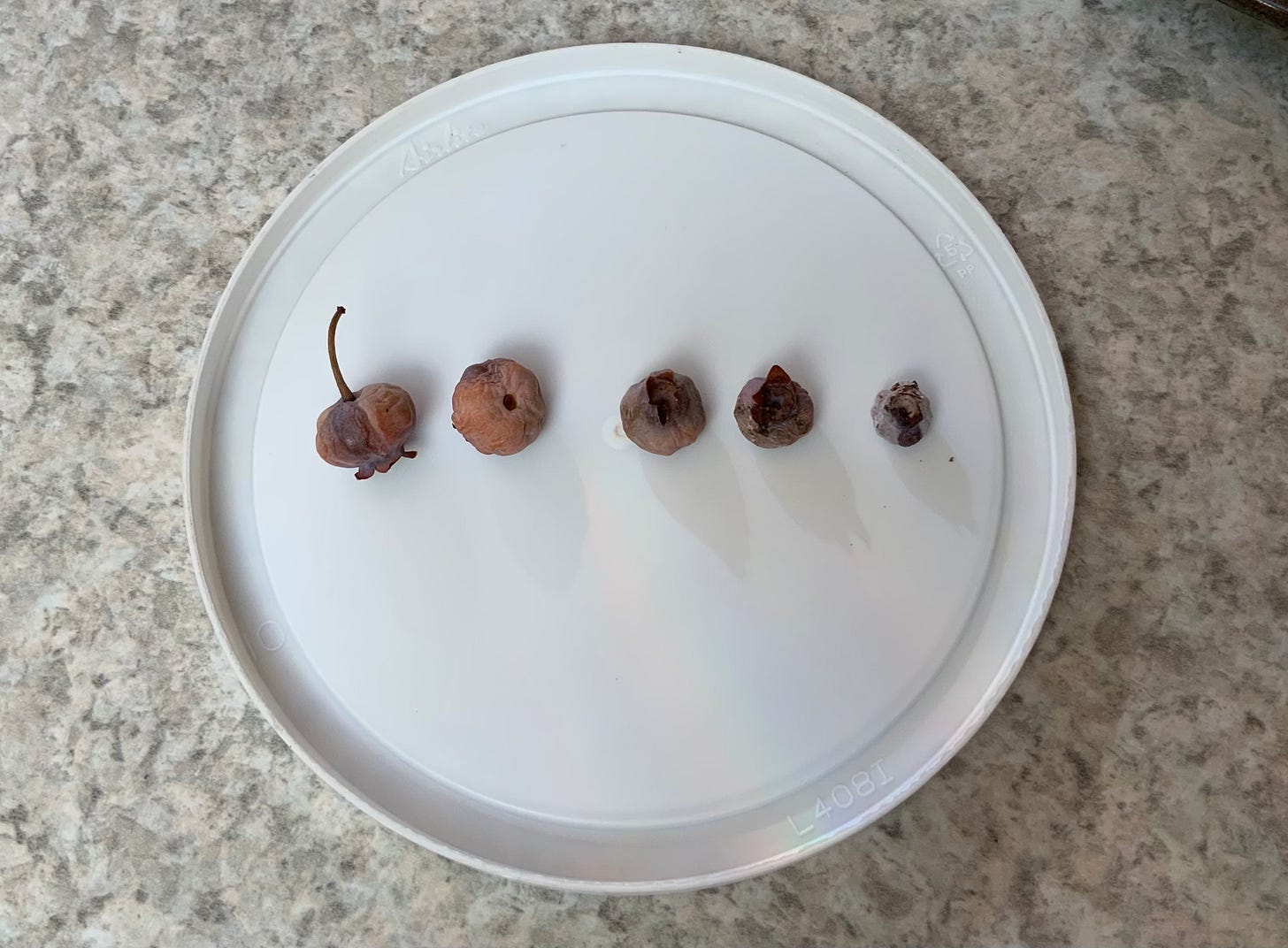
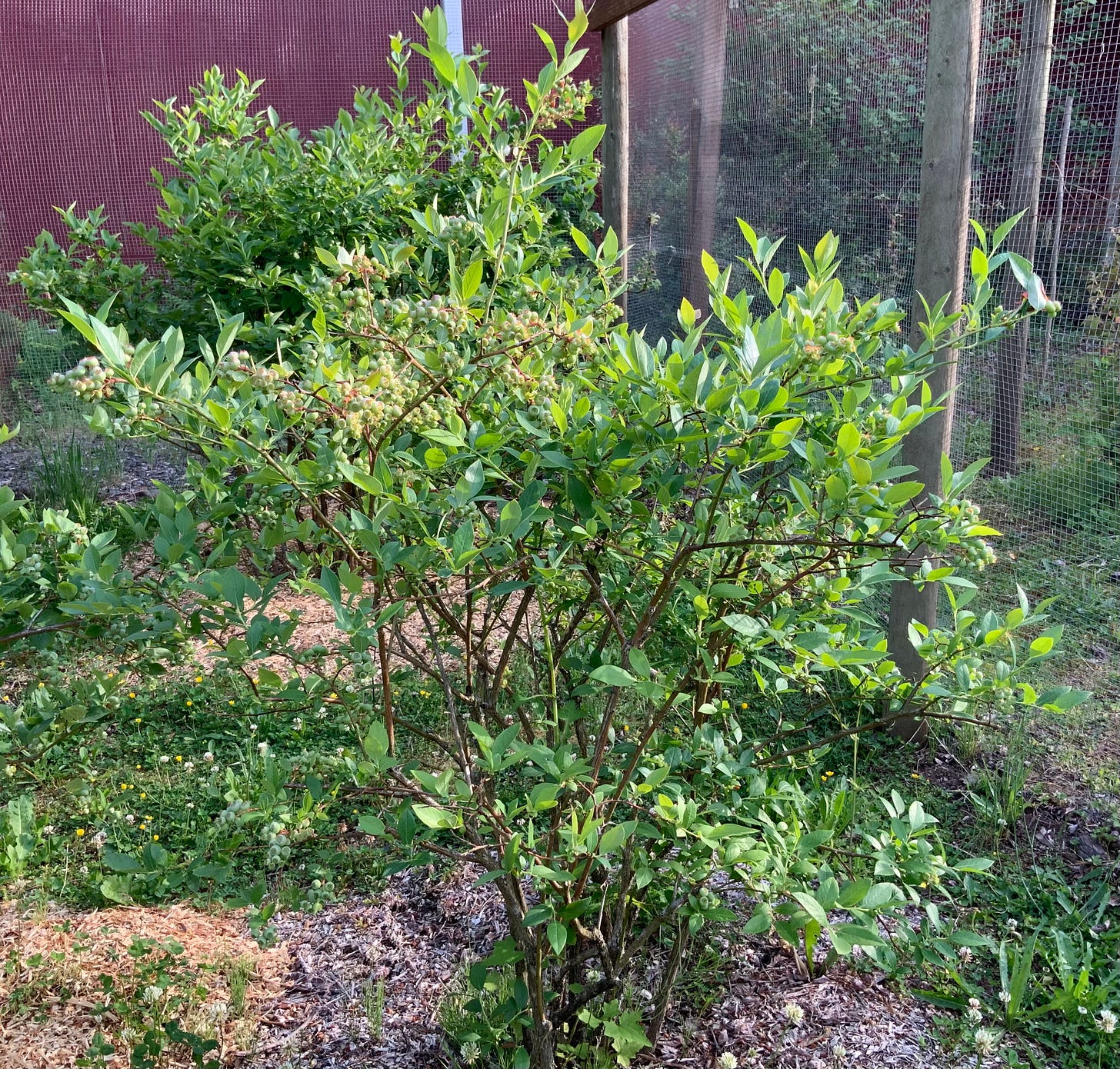
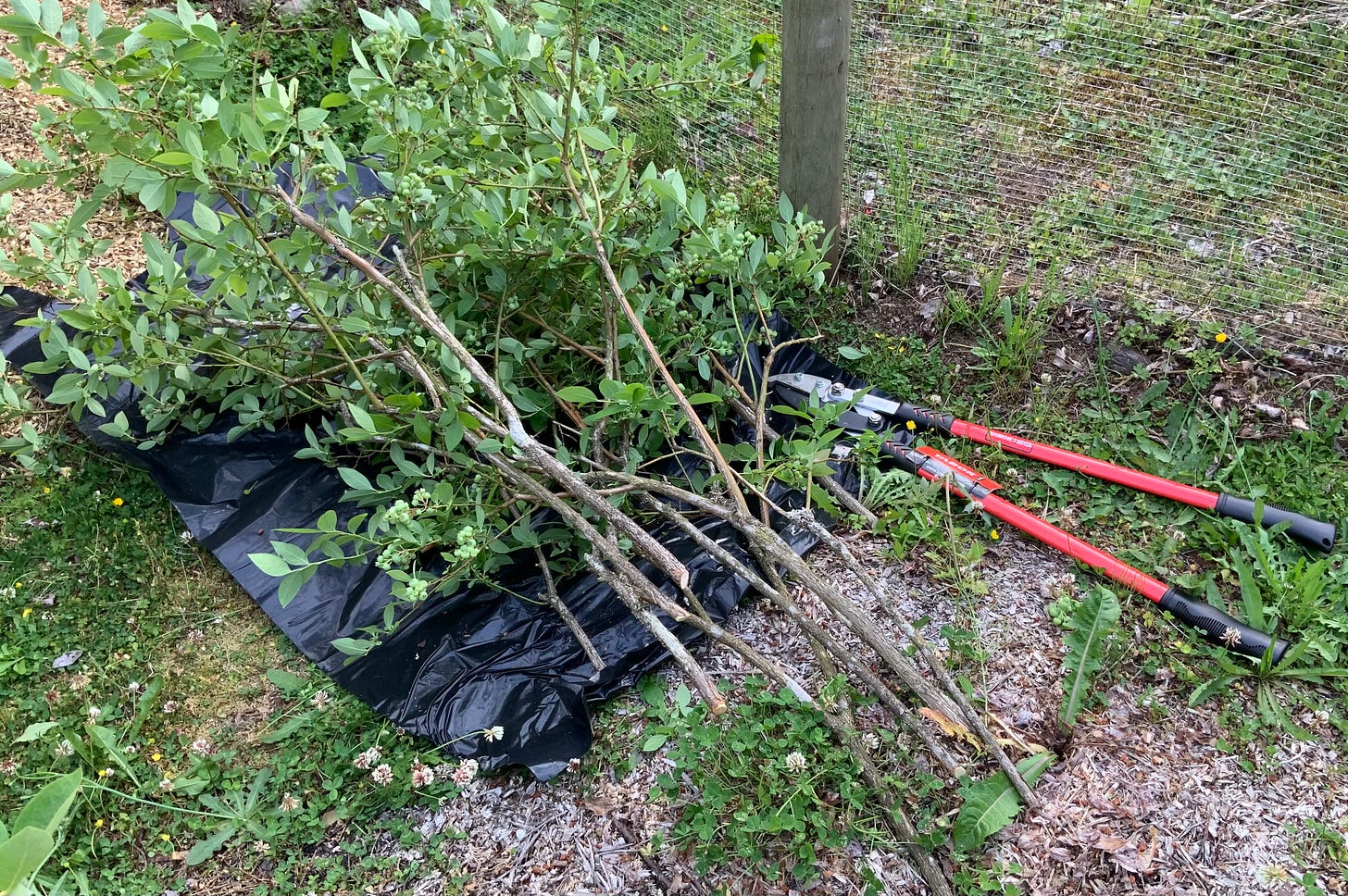
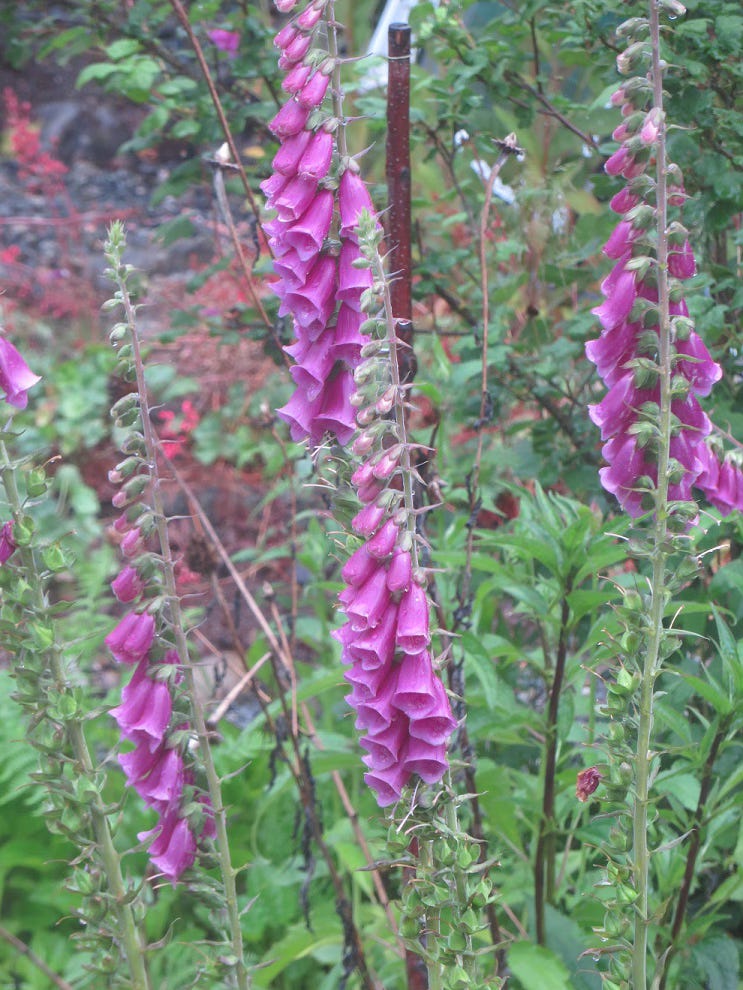
RIP to your blueberries! As you know, normally I can't get behind any bird-related tales but in the spirit of containing wasps, I will support it! (Not lost on me that your book recommendation also had a bird on it!)
So much to comment on here, and loved it all: crows, blueberries, book recs! I had a similar experience here when a colony of yellow jackets moved into the rocks around my garden pond! These fellows were permanently angry and we could barely walk by. I had no idea how to handle this. Then, I was up really early one day and observed a giant skunk greedily, expertly, rooting out (larvae?) from between the cracks around the rocks even as they buzzed around him. He cleared out the LOT! I was beyond thrilled. So I love that the crow was helpful too. Thanks for such a lovely read! xo